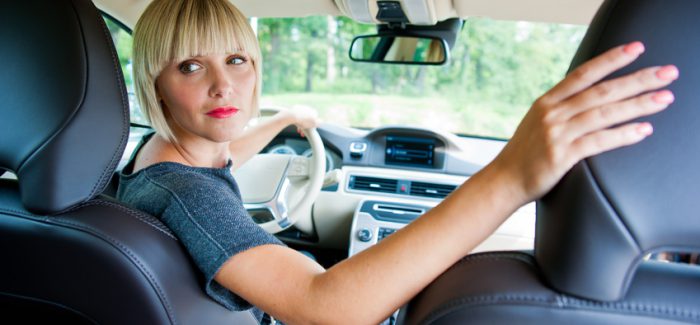Guide to Driving Test Manoeuvres
Manoeuvres can be seen as one of the hardest parts of learning to drive however, we want to make things a bit simpler by providing you with some information to give you a head start on your knowledge about the Driving Test Manoeuvres.
When you take your test, the examiner will ask you to show them one of the five manoeuvres. These are all different manoeuvres which will showcase your parking and reversing abilities mostly, so it is best to start preparing yourself for this now!
The Emergency Stop Manoeuvre
The Emergency Stop may not strictly be classed as a manoeuvre however, your examiner may still ask you to show them this during your test to prove to them that you have a good response rate and hazard perception skills too!
If you are asked to demonstrate this, this is a chance to show your examiner that you stop the vehicle in a quick, safe and controlled manner.
@dgndriving THE EMERGENCY STOP #drivingtest #drivingtips #filmset ♬ Sunroof – Nicky Youre & dazy
How to complete an Emergency Stop
- The examiner will tell you beforehand that they want to see you perform the emergency stop.
- They will then check your mirrors and blind spots to ensure the road is clear.
- Once this is confirmed they will tell you to ‘stop’ whilst raising their hand.
- You then perform the emergency stop in a controlled manner by pressing the brake firmly and as quickly and safely as possible, making sure to use the clutch pedal to ensure you don’t stall.
- Once completed and there is no danger, apply the handbrake and move the gearstick into neutral.
- Your driving examiner will tell you when to move off again. Make sure to do your regular checks before pulling off!
Bay Parking Manoeuvre
This is a crucial driving manoeuvre and you are likely to use this every time you drive!
This manoeuvre is split so you have two options to choose from. These are Forward Bay Parking and Reverse Bay Parking.
Reverse Bay Parking Manoeuvre
The reverse bay park is seen as the safer option of bay parking in some instances however, some drivers find it more difficult.
You will have to show your examiner that you can safely reverse into a bay whilst keeping inside the lines!
How to reverse park into a bay
- The instructor will ask you to pick a bay to drive into which you must complete whilst staying in the lines.
- Once you have picked the best bay, position your car in the middle of the road to give yourself room.
- Position the steering wheel into a complete lock and reverse slowly whilst constantly looking at your mirrors to make sure your car is within the lines and stop when you are fully in the bay. Pull up the handbrake and put the car in neutral once done.
Forward Bay Parking
Many drivers find this method easier than Reverse Bay Parking in most instances.
Again, you will need to show your examiner that you can safely drive into a space whilst staying inside the lines.
How to drive forward into a bay
- The instructor will ask you to pick a bay to drive into which you must complete whilst staying in the lines.
- Once you have picked the best bay, move over to the left to ensure you have space to turn.
- Check your blind spots and mirrors to check the area is clear. Once done prepare to turn into the bay.
- Start turning the steering wheel until you get it into the right position and move off slowly until you are in the bay. Pull up the handbrake and put the car in neutral once done.
Parallel Parking Manoeuvre
Parallel Parking can be a tricky manoeuvre for many drivers as there is a lot to it and the technique can be hard to get right. But, with lots of practice, you can nail this one in no time!
How to parallel park
- Position your car beside the parked car which you intend to park behind.
- Check your mirrors and blind spots and then start to reverse your car
- Reverse the car slowly and begin to turn your steering wheel to the right
- Now your car is positioned, straighten the steering wheel and continue to reverse
- Once the front of the car has passed the back bumper of the car in the spot in front of you, begin to turn your steering wheel to the left.
- Once the vehicle is straight and close to the curb, make sure to position your car properly so there is enough room for the cars in front and behind you.
Pulling up on the Right Manoeuvre
If you are asked to demonstrate this manoeuvre, you will need to show your examiner that you can safely pull up on the right and then reverse two car lengths.
@drivingtestsuccess HOW TO: 👉🏼 Pull up on the right and reverse 🚘✅ #drivingtest #learnerdriver #manouevres #learnontiktok #howto #tutorial #4in1app #drivingtestsuccess #fyp #foryou ♬ original sound – Driving Test Success
How to pull up on the right and reverse
- Find a safe location for you to pull up.
- Use your mirrors and then signal to pull up to the right, making sure your car is parallel with the kerb before stopping the car.
- Then check your blind spots and mirrors, and slowly start to reverse two car lengths. Once done stop the car and pull up the handbrake.
- When safe to do so, re-join the road.
Keep Practising!
Remember, you may not get any of these manoeuvres right the first time so don’t be disheartened. Keep practising the driving manoeuvres, and you will ace them all in no time!
More Information: Safely Insured Website | Get a Quote | Call Us
Stay updated: Follow our Instagram | Follow our Facebook | Follow our Twitter

















